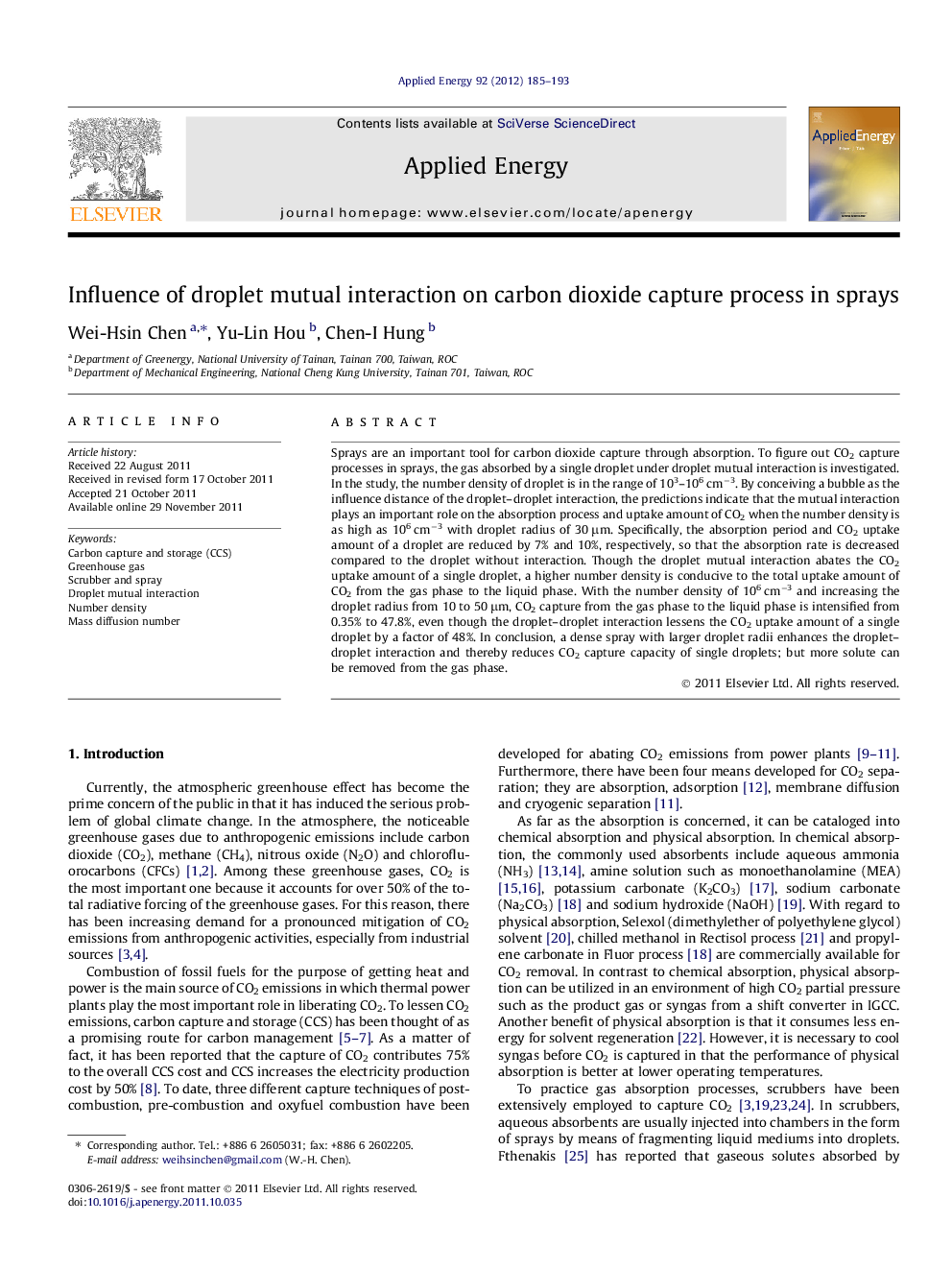| Article ID | Journal | Published Year | Pages | File Type |
|---|---|---|---|---|
| 243593 | Applied Energy | 2012 | 9 Pages |
Sprays are an important tool for carbon dioxide capture through absorption. To figure out CO2 capture processes in sprays, the gas absorbed by a single droplet under droplet mutual interaction is investigated. In the study, the number density of droplet is in the range of 103–106 cm−3. By conceiving a bubble as the influence distance of the droplet–droplet interaction, the predictions indicate that the mutual interaction plays an important role on the absorption process and uptake amount of CO2 when the number density is as high as 106 cm−3 with droplet radius of 30 μm. Specifically, the absorption period and CO2 uptake amount of a droplet are reduced by 7% and 10%, respectively, so that the absorption rate is decreased compared to the droplet without interaction. Though the droplet mutual interaction abates the CO2 uptake amount of a single droplet, a higher number density is conducive to the total uptake amount of CO2 from the gas phase to the liquid phase. With the number density of 106 cm−3 and increasing the droplet radius from 10 to 50 μm, CO2 capture from the gas phase to the liquid phase is intensified from 0.35% to 47.8%, even though the droplet–droplet interaction lessens the CO2 uptake amount of a single droplet by a factor of 48%. In conclusion, a dense spray with larger droplet radii enhances the droplet–droplet interaction and thereby reduces CO2 capture capacity of single droplets; but more solute can be removed from the gas phase.
► CO2 capture process by a single droplet under droplet mutual interaction is investigated. ► The number density of droplet is in the range of 103–106 cm−3. ► The droplet mutual interaction abates the CO2 uptake amount by a single droplet. ► More CO2 can be removed from the gas phase using a dense spray with larger droplet radii.
